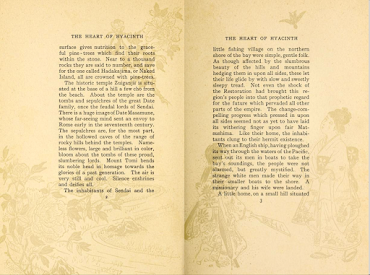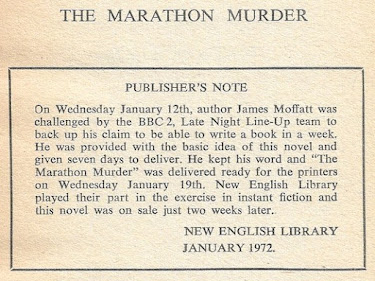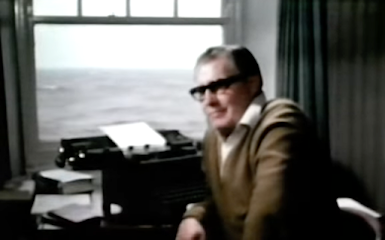Jan Hilliard [Hilda Kay Grant]
192 pages
Jan Hilliard's third novel, its curtain rises on the cramped three-room flat shared by underpaid, middle-aged bank clerk Homer Flynn, wife Dolly, and mother-in-law Mrs Bigelow. Sister-in-law Grace, a secretary at an advertising agency, lives across the hall. Grace's husband, Raymond, lost a foot in the Second World War, and with it the will to do much of anything. Mrs Bigelow thinks the world of Raymond, and very little of Homer.
Not long ago, Homer suffered the loss of Aunt Harriet, his late mother's sister. In absence of a will, solicitors Ramsey, Claxton and Stone have advised that he may be next of kin. Aunt Harriet was a widow. Her only child, Claude, ran away at sixteen, taking with him a fair amount of cash and jewellery belonging to his mother and her boarders. This crime was followed, years later, by newspaper accounts of Claude's ill-fated attempt to conquer Niagara Falls in a barrel.
Mrs Bigelow dreams that Claude's inheritance might provide just enough money to purchase a donut-making machine. She wants to start a business called "Granny's Greaseless Donuts." Dolly dares hope for $5000, all the while telling her husband that his expectations of $10,000 are far too high, and that he will only be disappointed. As it turns out, Homer inherits $250,000, roughly three million in today's dollars. Add this amount to the sale of Aunt Harriett's large Victorian house, bathed in the red lights of Lavinia Street. Mrs Bigelow is quick to question the source of the dead woman's wealth:
"I aways thought there was something funny about those boarders of hers. Her young ladies, she used to call them. 'What do they do?' I asked her, that time I went to see her. 'They're secretaries,' she said. 'Then why are they at home today?' I asked. 'It's their day off,' she told me. In the middle of the week."
Mrs Bagelow catches herself, demonstrating momentary restraint in recognition that, of a sudden, Homer has the upper hand in their relationship. She wants her son-in-law to move the family to the Riviera, but having spent a career in banking he is far too practical. Instead, Homer purchases a large country cottage for his wife and mother-in-law. Homer, who had always wanted to grow his own vegetables, fruits, and flowers, tends to his gardens with hired hand Mr Newby. Mrs Bigelow, who was never really interested in selling donuts, embraces the opportunity offered to become a landscape painter. In doing so, she attracts the romantic attention from neighbour George, an amiable wealthy widower who made his money selling fish. Dolly, the novel's least defined character, is just happy that her mother and husband are happy.
"I'm going to be perfectly honest with you. I'm going to lay my cards on the table. The minute I prove I'm Claude Jeffries, the police will move in, I'd spend the next twenty years behind bars. However," he raised his voice as Homer was about to say something, "there's no law saying a man can't inherit money because he happens to be in jail. You know of any such law?"
"I know very little about such things."
"Take it from me, there's no such law. Now, the way I look at it Homer, we're both in a spot."
"You're in a spot," Mrs. Bigelow said, but in a small voice.
"So here's what we'll do. I'll stay on here with you folks, share my inheritance with you. In return, you'll protect me, keep my true identity secret."
Knowing the value of first impressions, she did not want to be seen by him until tomorrow, when, her hair washed and set, she would be wearing her pink jersey sweater over her new brassière with the pointed cups.
About the author:
 |
| Star Weekly Magazine, 22 August 1959 |






























